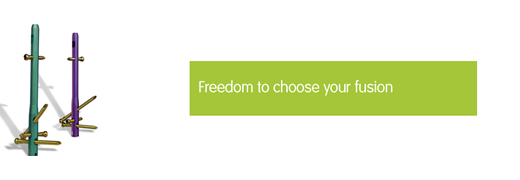


Download the TRIGEN Hindfoot Fusion Nail Surgical Technique
The TRIGEN Hindfoot Fusion Nail (HFN) brings the simplified instrumentation of the TRIGEN NAIL SYSTEM to the hindfoot. The TRIGEN HFN features an oblique locking configuration that allows surgeons to maximize thread purchase by locking into better bone. The TRIGEN HFN advantage allows surgeons to target screws through the calcaneus and into specific bones to attain the most stable construct while at the same time gaining fusion between the calcaneus and surrounding bones. Fusion is further aided by allowing screws to cross the articulating surfaces of the calcaneus and talus, as well as the calcaneus and cuboid bones.
Unlike other ankle arthrodesis nails that are currently available in the market, the TRIGEN HFN offers threaded distal screw holes for added stability and reduced risk of screw back out. In addition, the surgeon may select not to use specific holes or to use shorter screws that allow the joints to maintain mobility. Rotational stability is also achieved by means of a static locking hole or dynamic compression slot in the proximal end of the nail. The region of the nail near the driven end (inferior when implanted) has an increase outer diameter for additional rigidity and stability.

Download the TRIGEN Hindfoot Fusion Nail Surgical Technique
What are the fusion areas for TRIGEN HFN?
Fusion occurs at the subtalar joint with the talus screw, calcaneocuboid joint with the cuboid screw, and the tibiotalar joint with the TRIGEN HFN.
How many screws do I need to use? Which screw lengths are appropriate?
Screw length and screw placement are entirely at the surgeon's discretion. Flexibility of screw selection allows multiple screw configurations tailored to each individual procedure.
How is compression achieved with the TRIGEN HFN?
Manual compression can be achieved by attaching the Impactor to the Drill Guide. After attaching, flex the knee and tap the construct with the Slotted Hammer.
Can bone graft be used in ankle arthrodesis cases?
Yes. Once the nail is locked into place with screws and the foot is stable, bone graft or bone graft substitutes can be used to fill in all gaps around the bones.
For more information, please contact your local sales representative.